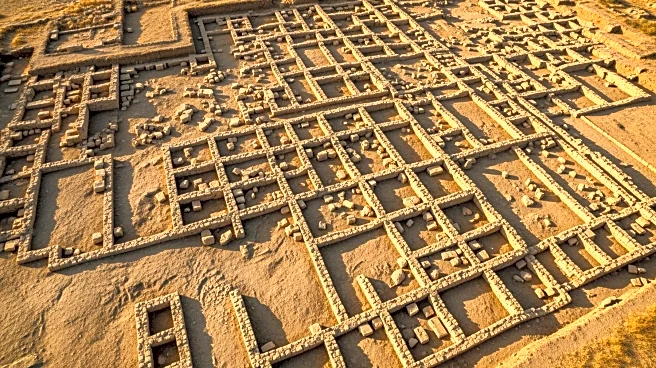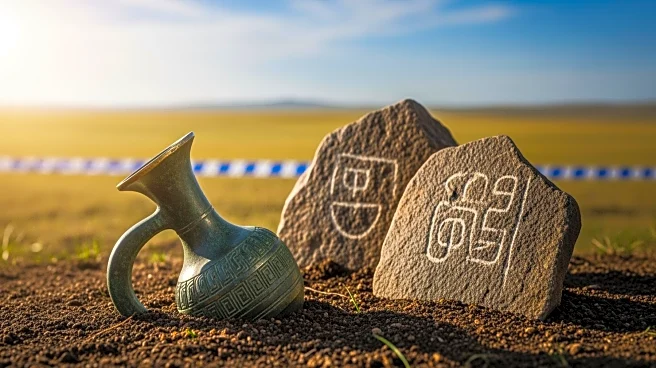What's Happening?
Archaeologists have unearthed a Bronze Age city named Semiyarka, located in northeastern Kazakhstan, which was lost for 3,500 years. The settlement, dating back to around 1600 BCE, challenges the traditional
view of steppe life as nomadic and temporary. Semiyarka features streets lined with enclosed houses and an industrial quarter dedicated to metalworking, indicating a more settled lifestyle. The site spans approximately 346 acres, making it the largest of its kind in the region. The discovery includes an industrial zone for tin bronze production, with evidence of organized, long-term manufacturing. This suggests that Semiyarka was a specialized center for producing tools, weapons, and ornaments, serving communities across the steppe.
Why It's Important?
The discovery of Semiyarka provides new insights into the urban planning and industrial specialization of ancient steppe societies. It challenges the notion that these regions were merely gaps between 'real' civilizations, showing that they supported their own forms of urban life. The site's strategic location near copper and tin sources and its connection to trade routes highlight its role as a regional hub for both trade and production. This finding pushes scholars to reconsider the cultural and economic dynamics of the Eurasian steppe, emphasizing the importance of metalwork and planned settlements in shaping ancient societies.
What's Next?
Researchers aim to further explore the organization of production at Semiyarka, including control over resources and the distribution of finished goods. Environmental studies will assess the impact of smelting activities on the local landscape. Additionally, the discovery of nearby burial sites and camps may provide more information on family life, beliefs, and connections between communities. These investigations will deepen understanding of the social and economic structures of the region during the Bronze Age.
Beyond the Headlines
Semiyarka's discovery prompts a reevaluation of urban development in ancient steppe societies, highlighting the role of industrial zones rather than monumental architecture in defining cities. This challenges traditional textbook narratives and underscores the diversity of urban planning across different cultures. The findings suggest that steppe societies were capable of complex organization and specialization, contributing to broader discussions on the evolution of urban life.











